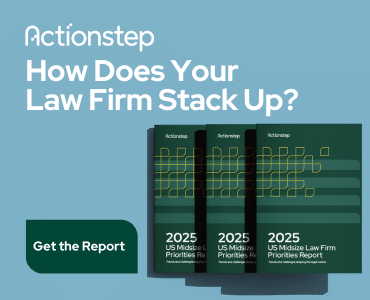Almost three years ago, our law firm switched to Clio as a case management platform. We have a very busy personal injury law firm that does an extensive amount of marketing and handles a volume of 500 to 700 new client calls per month, so we went with the Elite option, which included call tracking.
Shortly after switching, we began migrating phone numbers over to Clio for tracking. It took us a while to get the system running, but once we got campaign tracking enabled on all our advertising lines (which totaled 54 phone lines at one point), we began studying the data. We were amazed by all the things our old ways of call tracking simply could not do.
(Note: This past fall, Clio moved its call tracking into Clio Grow, its new CRM product; rather than upgrade, we now use CallRail for tracking.)
The Old-School Way of Campaign Tracking: Cost Per Call
Before using Clio, we had no automated tracking system that could help us evaluate the return on investment of our advertising sources. The only way we could even get an idea of what advertising was producing — and what it was not — was to look at the monthly phone bill, determine how many calls each advertising source produced on its assigned phone number, and then divide the cost of the campaign by the total number of calls to arrive at the cost per call produced. For example, if we spent $2,400 a month for a magazine ad and it produced 24 calls, then the cost per call was $100. You could then compare that with other sources to determine which one produced calls at the best rate.
While the cost-per-call method is better than pure guesswork, it is not very accurate. It does not tell you how many of those calls were people you could help. You have no way of knowing if those calls are potential clients, or people calling about the wrong area of law, or salespeople, or even fraudsters. It is an easily misinterpreted and inaccurate statistic.
Clio Campaign Tracking
Clio campaign tracking allowed us to migrate over our existing phone numbers and generate new numbers for tracking. It takes less than a minute to set up a new campaign and generate a new tracking number. Once it is set up, the tracker not only keeps a total of all calls coming in on that number, it logs the time they came in, the length of the call and the call data if available: name, number and address of the owner of the phone.
That’s Odd: Analyzing the Numbers
Not too long after the call tracking system was set up, I notice that one of our radio ad campaigns was generating a disproportionately large volume of calls compared with other radio advertising. It was a fairly inexpensive local radio ad campaign, so I decided to take a closer look. What struck me first is that the calls were coming in from a variety of numbers, but they were all California numbers. Since the ad was running on a local Houston radio station, this was odd.
When I looked closer, I discovered that the calls were coming in large bursts at really strange times. The burst of calls would occur one or two days a week. They would start at 6 p.m. or later, and stop early in the morning. But they always stopped before business opening hours.
Then I noticed that the calls were all lasting only a few seconds each — many of them hung up before the phone was even answered. As it turns out, all of the callers were calling and then either hanging up before an answer or getting our answering machine and hanging up before the beep to leave a message. This made no sense.
Cost Per Call Skewed
When I showed the data to the firm’s senior management, he pulled out his own data and said, “Well, this would explain why the cost per call calculations always seem so low.” It finally added up.
Someone was manipulating our call data to make it look like this particular campaign was generating a bunch of calls when they were really just hang-ups.
It appeared that, recognizing that people make their ad buy decisions based on the number of calls showing up on a phone bill, someone had devised a way to manipulate the results. It could have been the radio outlet. Or it could have been a marketing company they hired. It could have been that the radio station had no idea a marketing company was doing this.
Confronting the Problem
Rather than jumping to conclusions and making accusations, we brought the call data to the attention of our radio marketing contact. They suggested maybe there was a similar number, in California, that was used for radio ads and it was producing such a volume of calls that people were just misdialing us regularly. This seemed highly unlikely.
To make sure our data was accurate, we provided the company with a new tracking number to use in the ads and we set up a separate tracking campaign. However, we did not tell the company that we were keeping the other number active and continuing to track it as well. We also switched to a 24-hour answering service versus an answering machine so that callers could not simply hang up before the beep.
A few months later, we took another look at the data to see what had changed. We found two very interesting pieces of information. First, the new tracking number generated an average of three calls a month — a drastic drop in calls. All of those calls were local — no more bursts of California calls. But the more telling information was that the bursts of California calls quit appearing after hours on the old number, too. We would not expect this to happen if it were merely people misdialing.
Metrics Make You a Smarter Marketer
You may not use Clio, but there are plenty of good practice management and marketing platforms that will help you manage leads and track metrics. We think it is worth the cost. Getting a more accurate idea of your ROI helps you make better marketing decisions. And the smarter you are, the harder it is to get scammed.
In short, thanks to the call tracking feature, we were able to determine the accurate cost per call and more correctly analyze the true value of the advertising campaigns we were paying for.
Illustration ©iStockPhoto.com
You might also like:
“Five Ways to Generate Referrals on a Budget” by Paul Cannon
Subscribe to Attorney at Work
Get really good ideas every day for your law practice: Subscribe to the Daily Dispatch (it’s free). Follow us on Twitter @attnyatwork.
















